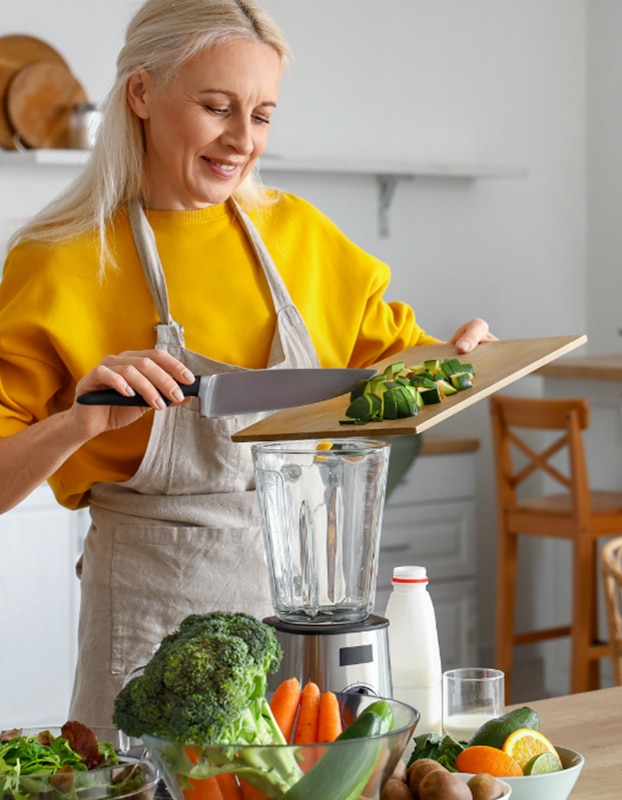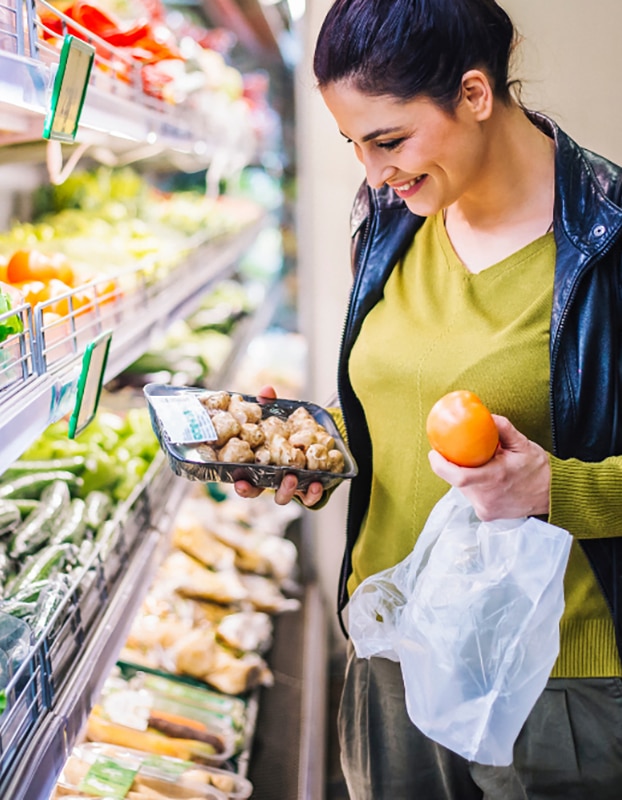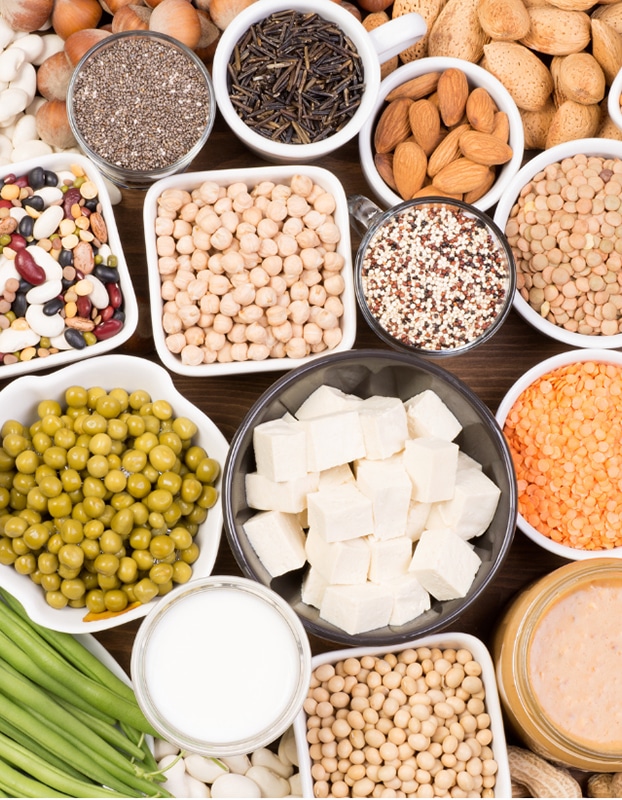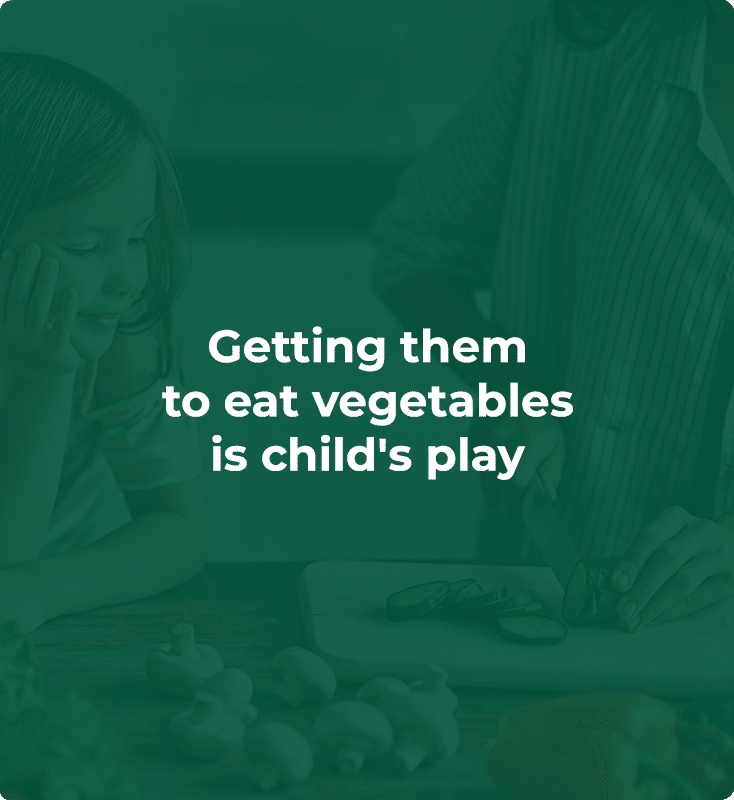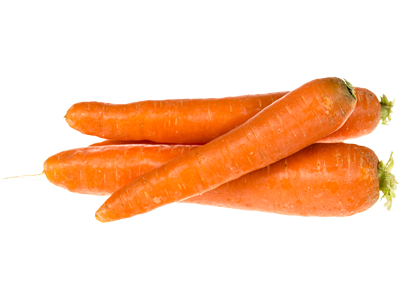Atouts
pour la santé
Pour une peau de pêche et une vision de lynx
Par sa richesse en bêta-carotène ou pro-vitamine A, la carotte entretient la santé de la peau, mais aussi celles des yeux en contribuant à une bonne vision nocturne.
Le ba-ba du bêta-carotène
- Plus les carottes sont colorées, plus il y a de caroténoïdes. Les carottes marron contiendraient deux fois plus de bêta-carotène que les carottes orange, tandis que les jaunes en contiendraient très peu et les blanches, pas du tout.
- Les caroténoïdes sont mieux assimilés avec une matière grasse, car ils sont liposolubles. L’huile de la vinaigrette dans les carottes râpées est donc la bienvenue! Ceci est valable aussi pour tous les autres caroténoïdes de la carotte, comme la lutéine et la zéaxanthine.
La carotte contient aussi:
- des fibres douces
- de la vitamine B6
- du potassium
- du magnésium
- du phosphore
A retenir: les quantités de caroténoïdes les plus importantes se trouvent dans les carottes… surgelées (devant les carottes cuites, puis les crues qui en contiennent 3 fois moins que les surgelées)!
Tableaux de valeurs
nutritionnelles
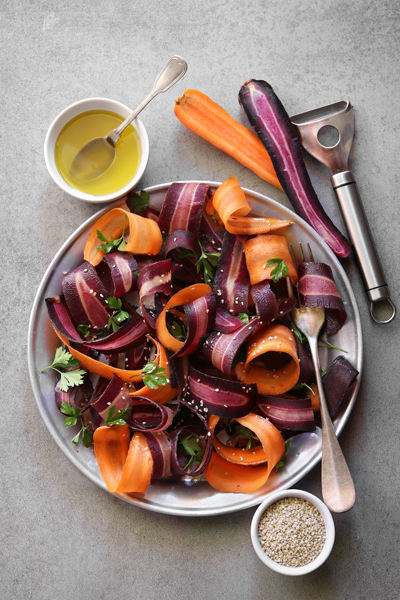
Le bon moment
pour en manger
Toute l’année.
La carotte est disponible toute l’année, mais sa pleine saison s’étale d’août à mars! Cependant, pour les carottes primeur, la dégustation se concentre de mai à juillet.
- January
- February
- March
- April
- May
- June
- July
- August
- September
- October
- November
- December
Potager
ou balcon en ville?
Plante bisannuelle, la carotte se cultive très facilement et apprécie les sols sableux, bien drainés, neutres et légers, ainsi qu’une exposition ensoleillée et à mi-ombre.
Pour tout savoir sur la façon de cultiver les carottes, rendez-vous sur la rubrique consacrée exclusivement à ces conseils.
Choisir
et conserver
Pour bien choisir votre carotte:
- Surveillez leur couleur qui doit être intense. Les fanes (leurs feuilles) doivent elles aussi être bien vertes et… non fanées.
- Plusieurs variétés permettent d’en trouver toute l’année sur les étals : les hâtives, puis les précoces, les «primeurs», les «nouvelles», puis les «conservations»…
Pour bien conserver votre carotte:
- Les carottes se conservent bien à l’abri de la lumière et de l’humidité.
- Pour mieux les conserver: coupez les fanes avant de les ranger dans le bac à légumes du réfrigérateur pendant 3 à 4 jours.
- Les carottes dites de “garde” peuvent se conserver jusqu’à 8 jours. Mais si vous disposez d’un endroit très frais et bien aéré, avec une humidité contrôlée dans votre maison, vous pourrez les conserver encore bien plus longtemps.
Astuces
et tours de main
La carotte se prépare…
La carotte se prête à toutes les tailles et découpes, et à toutes les cuissons, c’est un vrai plaisir dans la cuisine! On peut la tailler en julienne, en cubes; elle s’émince, se râpe ou se croque.
Quelques repères pour les temps de cuisson:
- Autocuiseur: 8 à 10 minutes
- A l’étouffée ou braisée: entre 20 et 30 minutes
- A l’eau: comptez 30 minutes
- Au micro-onde: 10 minutes, coupées en rondelles de préférence
- Au barbecue: et oui, c’est possible aussi. Avec une bonne marinade, prévoyez 45 minutes
La carotte se marie avec…
La carotte se marie avec quasiment tout, en version sucrée ou en version salée, sous forme de gâteaux, tartes, soupes, veloutés, cakes, terrines végétales, salades, dips, sauce…
Les herbes (thym, persil), les épices, les fruits frais ou secs (oranges, citron, raisin frais ou secs, etc.), les fruits à coque et graines (noix, amandes, pignons de pain, graines de courges, etc.), les condiments (ail, échalotes, oignons, olives, etc.), les autres légumes d’été ou d’hiver (poivrons, céleri, pomme de terre, betterave, etc.), les viandes et les poissons: tout lui sied!
Conseil pour mieux assimiler les caroténoïdes des carottes. Préparez-les avec un peu de matières grasses: de l’huile, du beurre, des noix ou du fromage. Les caroténoïdes sont des composés liposolubles, donc solubles dans le gras!
Tout le monde
en mange?!
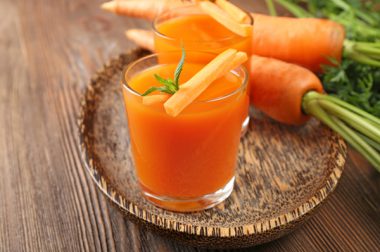
Enfants en bas âge
La carotte peut être proposée en purée dès le début de l’alimentation solide. Sa saveur sucrée la rend généralement très appréciée des bébés.
Dans de nombreux pays, la carotte est l’un des légumes le plus fréquemment proposé aux enfants, et cela dès le plus jeune âge. Une introduction précoce et une exposition régulière sont deux clés de succès pour assurer leur appréciation tout au long de la vie.
Et les autres…
Pour les personnes âgées, les formes cuites seront toutefois préférées car plus faciles à manger!
Retrouvez plein d’autres astuces pour faire manger des légumes aux enfants
Et ça vient d’où?
Origines et variétés
Origines. La production mondiale se concentre en Chine, aux Etats-Unis et en Russie, essentiellement dans l’hémisphère Nord. En Europe, le podium est occupé par la Pologne, le Royaume-Uni et les Pays-Bas.
Variétés. Du jaune au pourpre, de la carotte miniature à celles plus imposantes, plusieurs variétés différentes de carottes sont présentes sur les étals. Leur goût sucré varie en fonction des cultivars.



 Vegetable garden: growing red beans
Vegetable garden: growing red beans 


